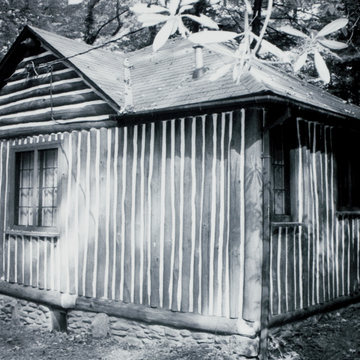West Virginia's largest state park at 10,001 acres, Watoga can be deemed the epicenter of Civilian Conservation Corps construction in the state. It was established in 1925 as Watoga State Forest, and one of the state's first CCC camps was set up here in 1933. Two additional camps established in 1934 and 1935 provided more than ample labor for necessary construction. When the park opened on July 1, 1937, CCC recruits had built an administration building, eighteen cabins, a superintendent's residence, a dam, which turned Island Lick Run into an eleven-acre lake. Four additional cabins followed the next year. According to Where People and Nature Meet: A History of the West Virginia State Parks (1988), “older dwellings in the vicinity were visited and studied as to the design of fixtures and furnishings, and available scrap iron was fashioned into hinges, door latches and fireplace implements in careful duplication of pioneer design.” Wood was salvaged from chestnut trees that had been killed by the blight but were still sound, and lumber was milled in the park. Watoga's cabins, numbered and easily seen from roads and trails, display great variety within the generic rustic context.
Cabins 5 and 14, essentially twins, are the most complex in plan and material, containing log, stone, and clapboard in their makeup. Most of the others are log with exaggeratedly rustic details. One of them has been converted to a CCC museum. The administration building, an impressive two-story log-and-shingle building, still serves its original purpose. The swimming pool, begun in 1939 and completed the next year, was Watoga's last major CCC project.










